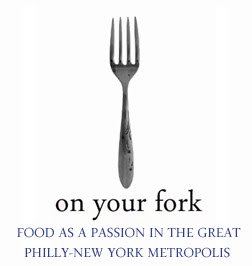
If that doesn't break your heart, I don't know what will.
This summer, I rebuilt what was my grandfather's outdoor fireplace. As a kid, during summers, we'd use the thing occasionally for marshmallows, bonfires and such. This past summer, I cooked on it once, then was instantly captivated by the whole idea of it, which sparked the rebuilding plans. I installed a lip on either side of the bricks to stick out just one inch (maybe less) to perfectly support a grill rack over the flames. It was among my proudest experiences of the season.
Thursday night, two days before putting this delightful piece of meat on the fire, I purchased it from the local
Key Food - a half leg of lamb - for about $18. It weighed close to 3 lbs., actually at least three pounds. That night I went home, pounded out about 7 cloves of garlic in a mortar and pestle, rubbed said garlic on outside of lamb with sea salt and pepper and wrapped the whole thing up with plastic wrap. But not before some good olive oil and four branches of windowsill-grown rosemary.
Then, this weekend, I transported this puppy up to New Jersey, got some coals going, put 'er in a tin foil tent/package, added a little more olive oil and let it sit for about three hours.
All week, cooking on a fire had been on my mind, and I was originally thinking brisket, but settled on lamb, which is one of my favorite foods. It was just me and Dad heading up to the lake, and I was pretty sure he didn't care for lamb all that much (turns out he doesn't mind it at all; I was wrong) so I figured there'd also be some steaks or burgers going over the flames, too, but nope. Friday, mind you,
Friday, I read in the Times this whole,
long glorious article by Michael Pollan about a 36-hour outdoor cooking feast he recently took part in.
It was that article that gave me the idea to cook some root vegetables in the ashes and embers, and on the way up, I picked up some turnips and parsnips, along with some asparagus I figured I'd toss on the grating.
So, some logistical things you'd probably secretly wonder/worry about regarding cooking outdoors.
1. First, you aren't really cooking over true flames. Flames provide much more heat than you'd need, but not the kind of prolonged, steady heat that you'd need to cook a piece of meat that's of any substantial size.
2. If you're just starting out, use charcoal. Buy a medium-sized bag of charcoal and pile them up in a pyramid if you don't have one of those metal charcoal-lighting devices. Because it is more fun, I prefer to do is start a true wood fire, then pile on the charcoal, add in some more wood, then have sort of a mix.
3. To do the actual cooking, spread the charcoals around the outer base of the fire pit, so that you're cooking in the middle, where there isn't too much heat. You can always replenish the charcoal or stir it around if you feel there really isn't much any heat in the middle, but a good indicator is this - the middle cooking space is too hot if you can't hold your hand there for more than three seconds.
4. It helps to not touch anything. Anything at all. Make sure the fire's OK, but other than that, walk away, get a cold one, or do some fishing.
5. Think about finishing your food - meat or otherwise - over true flames to impart a smoky, elemental flavor. It's worth putting in the extra firewood and getting the heat up, plus it's enjoyable.
So, I did all that. Somewhere in the middle of the lamb cooking, I took the turnips/parsnips and literally threw them into the ashes. No washing, no cutting, no oil, nothin'. Only thing was that I left them in while finishing the lamb (which - pictured above - I had unwrapped from the tin foil and placed directly on the grating) and grilling the oil-salt-pepper asparagus.

At least one turnip turned out looking like a burnt golf ball, as did half a parsnip.
The lamb finishing went really well. It sizzled up and turned golden brown and crusty. I turned it over a few times to hit all sides, then threw in the towel. Done.
Yes, I let the lamb sit while Dad prepared some emergency lentil soup, but there was no need for a backup plan. It was perfect. Medium for me on about half of it, well-done for Dad on the other half. Easy as that. The crusted outside was crispy, mildly salty, and delicious. All was heartwrenchingly juicy. That old, classic, comforting lamb flavor in a beautiful piece of meat cooked in a rustic, smoky way outside in the fall.
And the veg.? Great. You could taste the flames on the asparagus and you got a mild, tasty little char on the root stuff, which was great. They came out roasted just the same as if roasted inside an oven. There will be more ash/ember cooking in my future, and there should be in yours, too.


 The Four Loko alcohol/energy drink controversy put it over the top for me.
The Four Loko alcohol/energy drink controversy put it over the top for me.



 If the next test batch of 120 goes well at the R&D brewery in our Rehoboth pub and you happen to be in the area you might want to swing by and try it," said an official Dogfish blog post.
If the next test batch of 120 goes well at the R&D brewery in our Rehoboth pub and you happen to be in the area you might want to swing by and try it," said an official Dogfish blog post.




